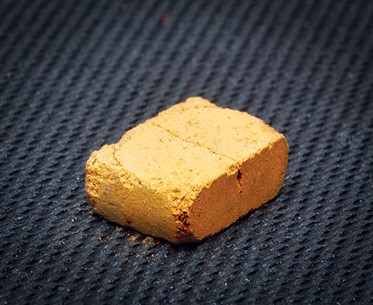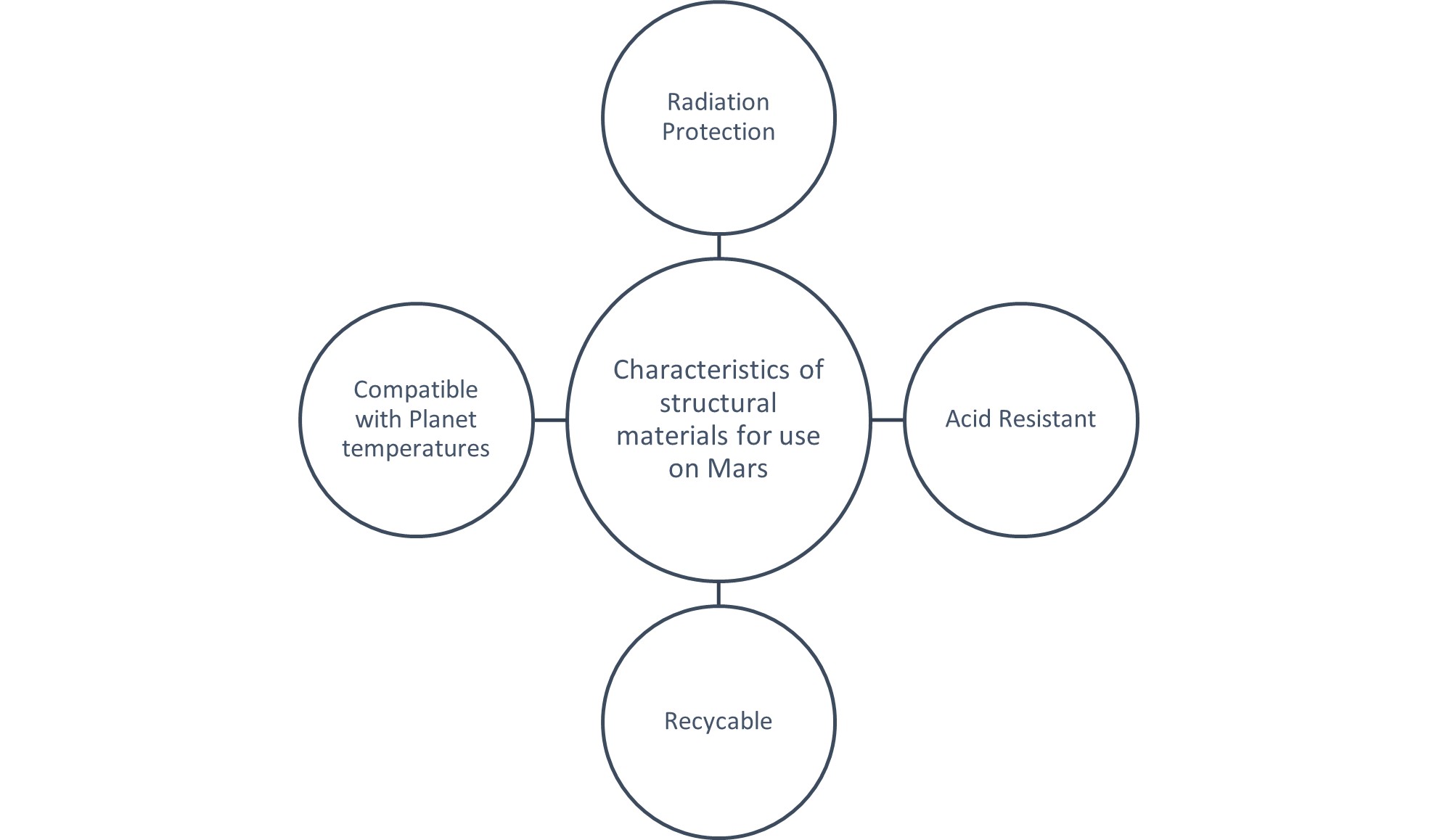Structures on Mars: Materials
Society's growing interest in exploring other planets and taking human life off planet earth leads to more and more areas of knowledge starting to explore what is outside planet earth. Mars has been the target planet for many, not only because it is closer to earth but also because it has some characteristics that make it possible to welcome human life, within some limitations. For this to happen it is necessary to have spaces created on Mars that offer basic living conditions and those spaces to be created need structures and barriers of isolation.
The transportation of materials from Earth to Mars is still quite expensive. Transporting structural materials between Earth and Mars to create buildings is uneconomic. Society must find ways to exploit the resources of Mars in order to create the spaces that will have the basic living conditions of the human species on this planet. One of the ways to achieve this, avoiding as much human labour as possible on Mars, is through 3D printing.

Slefty, through internal research and development, analysed the topic and identified some possible structural materials to be used. Due to the difficulty in accessing materials and information from Mars, all the work was mostly based on other work done by government entities.
Marciano Cement
This mixture consists of 50 % regolite and 50 % sulphur by weight. The process of obtaining this compound results only from the heating of the components to 120°C, followed by cooling to 20°C. It is an easy to obtain, recyclable and inexpensive mixture. However, there is a great lack of information regarding its mechanical characterization, which leaves us without relevant information for analysis. In addition, this mixture presents the problem of going into auto-ignition if the heating process exceeds the limit temperature. (WAIT, Taylor 2018)

Credits: Jacobs School of Engineering/UCSD
High density polyethylene composite with sand
This blend consists of 30% Basalt Fibre and 70% High Density Polyethylene by weight. Basalt fibres can be obtained from basalt, which is abundant on Mars. The process of obtaining hydrogen in the Mars atmosphere is difficult, however, polyethylene is a thermoplastic that can be used in lander packaging and later reused as a matrix for a composite. Despite a more complete characterization than the 1st mixture, no data were found regarding the modulus of elasticity of the mixture to traction. Due to the pressure difference between the habitat and the Mars atmosphere, the composite will be tractioned. As the sand does not give the tensile strength, only the polyethylene, it would be necessary to obtain the tensile mechanical characterization values.
PLA composite with basalt fibres
This mix was studied with the aim of being applied in the 3D printing industry. Through the consulted bibliography (Czigány 2013) it is concluded that compositions with a weight of 10 % and 20 % have the best mechanical characteristics. In addition, it is noted that for longer fibres, the material becomes more rigid but less resistant. Depending on the type of actions to which the structure will be subjected, we can choose less or longer fibres. As mentioned above, basalt fibre is a material easily found on Mars. The thermoplastic PLA is not available on Mars. However, it can be used initially as a material, in Lander packaging and after "melting" as a structural material. PLA is a material that can be acquired through the exploitation of starch and sugarcane, which will allow the long term obtaining of this polymer on Mars.
ABS composite with basalt fibres
The mechanical characterization obtained in ABS and basalt fibre composites is the most complete among the composites studied. It can be seen that the composite has a slightly higher resistance to compression than conventional concrete used on earth. In addition, the composite has a drastically higher tensile strength than concrete, which gives it a wider range of structural applications.
The application of ABS composite in 3D printing technology has already been successfully tested in space. (Coughlin 2019)

Due to the abundance on Mars, the tests already performed in reduced gravity and the great mechanical characterization of the material, the ABS composite with basalt fibers is the material chosen by the Slefty team to continue the research and development of structural solutions for this Planet.
Sources:
COUGHLIN, Natalie, et al. Development and Mechanical Properties of Basalt Fiber-Reinforced Acrylonitrile Butadiene Styrene for In-Space Manufacturing Applications. Journal of Composites Science, 2019, 3.3: 89.
CZIGÁNY, Tibor; KOVÁCS, József Gábor; TÁBI, Tamás. Basalt fiber reinforced poly (lactic acid) composites for engineering applications. 2013.
WAIT, Taylor. Development of Material for 3D Printed Habitats with Extraplanetary Applications. 2018.
WAN, Lin; WENDNER, Roman; CUSATIS, Gianluca. A novel material for in situ construction on Mars: experiments and numerical simulations. Construction and Building Materials, 2016, 120: 222-231.


